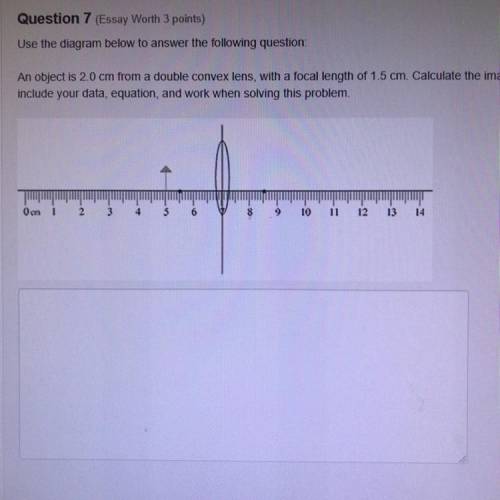

Answers: 2


Other questions on the subject: Physics

Physics, 21.06.2019 20:50, lokiliddel
An airplane flies eastward and always accelerates at a constant rate. at one position along its path it has a velocity of 34.3 m/s, it then flies a further distance of 40100 m and afterwards its velocity is 47.5 m/s. find the airplane\'s acceleration and calculate how much time elapses while the airplane covers those 40100 m.
Answers: 1

Physics, 21.06.2019 22:00, homework2358
There is a theory that indicates that dinosaurs became extinct when about 65 million years ago, a large asteroid hit the earth surface. dust caused by this collision blocked the sunlight reaching the earth's surface and many forms of life became extinct due to the cold. fearing this threat, how large the radius of an asteroid should you be looking for if the dangerous asteroid size is approximately the same as the one that killed the dinosaurs? available data suggests that about 18% of that asteroid's mass ended up as a dust spread evenly over earth after eventually settling out of the upper atmosphere. about 0.0180 g/cm^2 of dust, which is chemically different than the earth's rock, covered the earth's surface. typical asteroids have a density of about 1.9 g/cm^3. now that we know the size of the asteroid, how much energy was released during impact, assuming all of it was just the kinetic energy of the asteroid right before the impact?
Answers: 1

Physics, 22.06.2019 02:10, lunnar2003
How many hydrogen (h) atoms are in one molecule of sulfuric acid, h2so4? (1 points) 1 2 4 7
Answers: 3

Physics, 22.06.2019 19:30, cakey3501
The nuclear potential that binds protons and neutrons in the nucleus of an atom is often approximated by a square well. imagine a proton conned in an innite square well of length 105 nm, a typical nuclear diameter. calculate the wavelength and energy associated with the photon that is emitted when the proton undergoes a transition from the rst excited state (n 2) to the ground state (n 1). in what region of the electromagnetic spectrum does this wavelength belong?
Answers: 1
You know the right answer?
An object is 2.0 cm from a double convex lens, with a focal length of 1.5 cm. Calculate the image di...
Questions in other subjects:




Mathematics, 25.06.2019 01:40



World Languages, 25.06.2019 01:40

Biology, 25.06.2019 01:40


English, 25.06.2019 01:40




